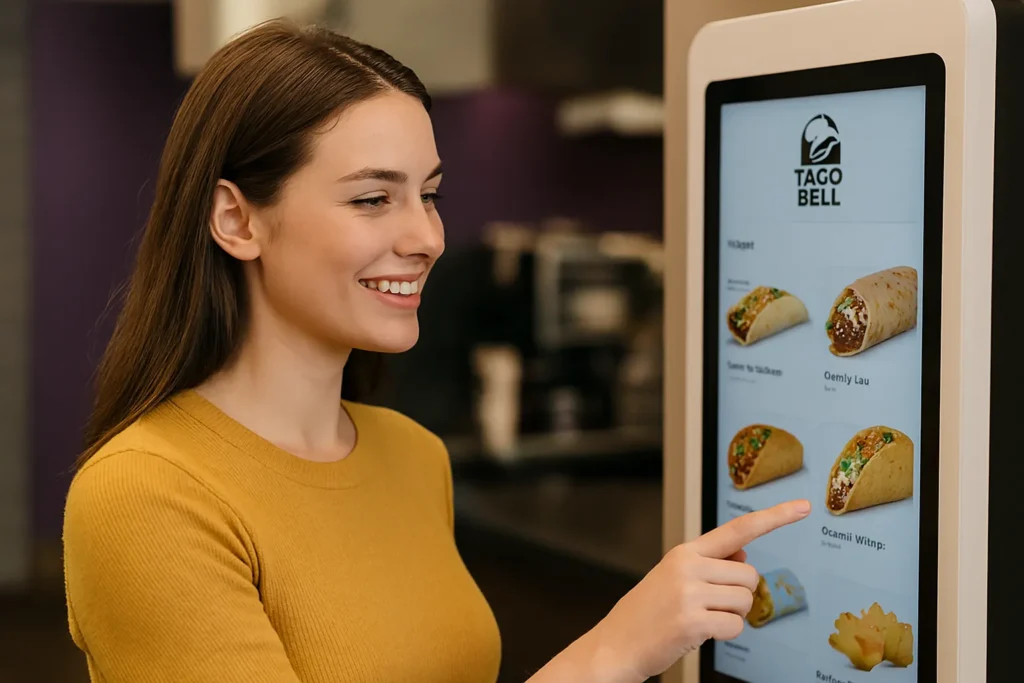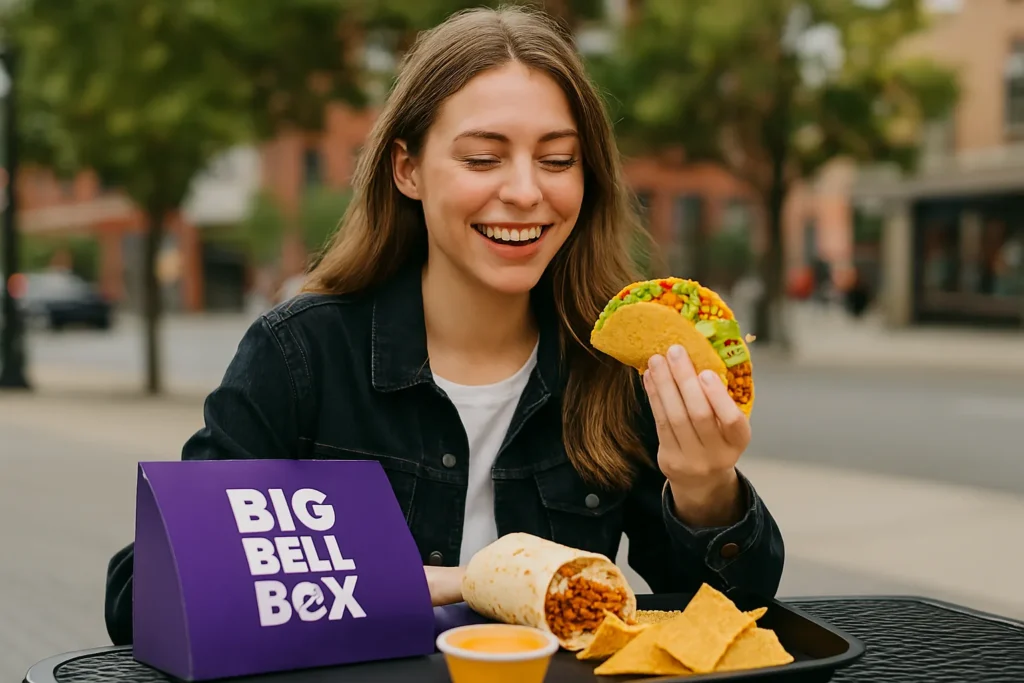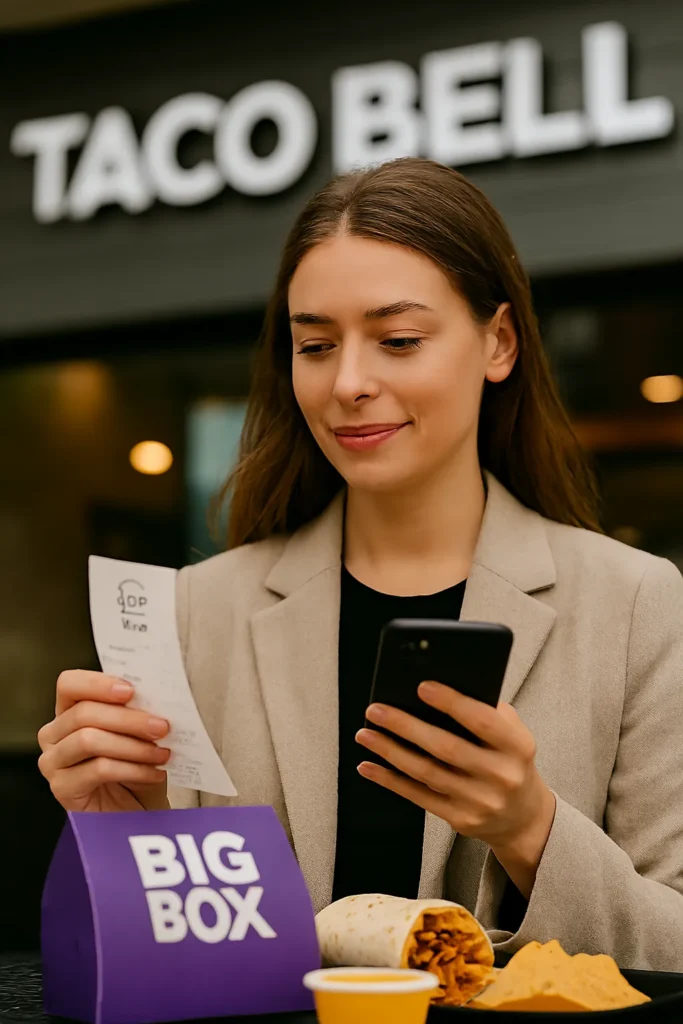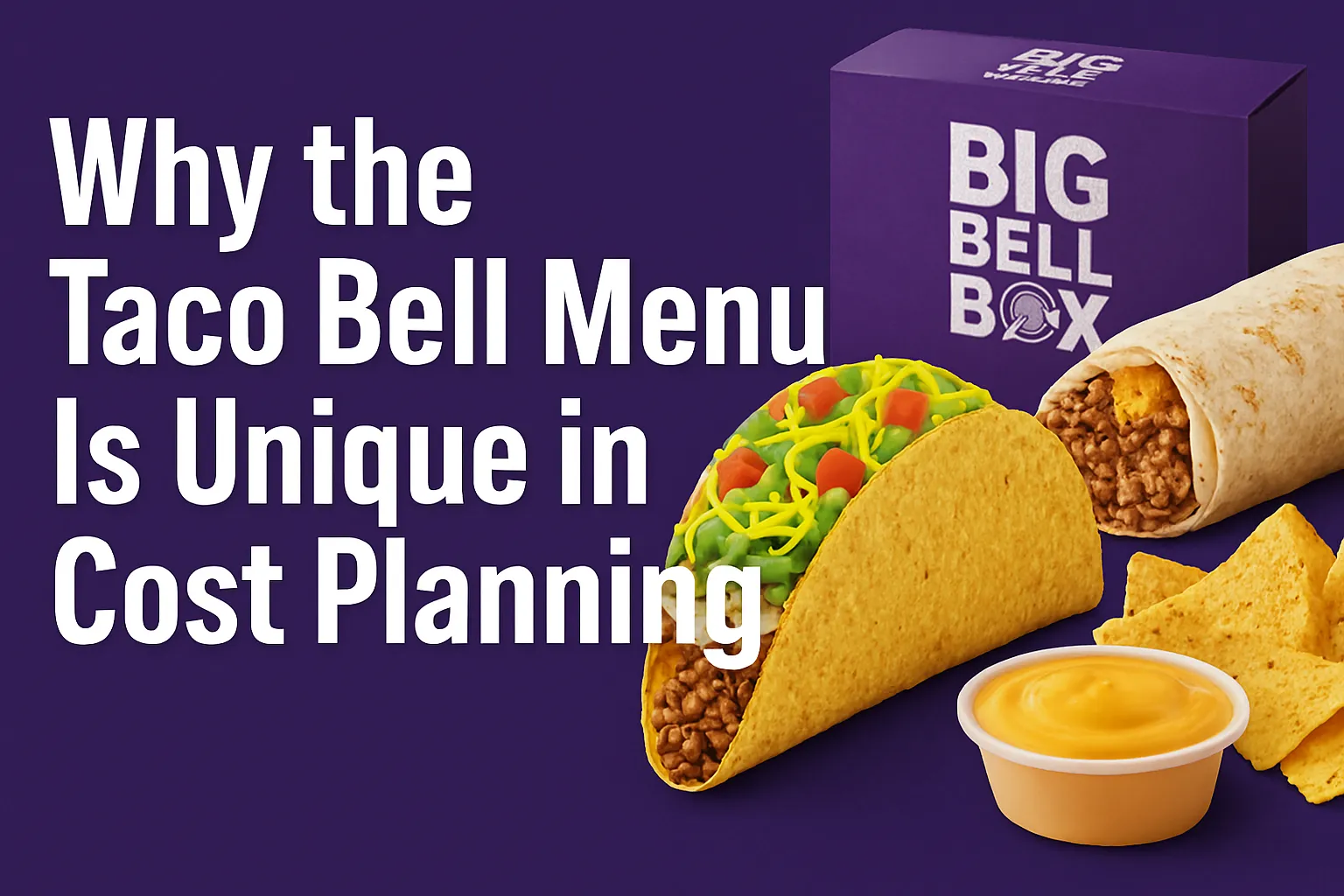Introduction: The Taco Bell Menu and Its Place in Modern Fast Food
When it comes to fast food chains in America, the Taco Bell Menu stands out not only for its Tex-Mex inspired dishes but also for its clever approach to cost planning. Unlike many competitors that focus primarily on premium pricing or limited deals, Taco Bell has built an entire reputation around affordability, creativity, and variety. From budget-friendly classics like the Bean Burrito to innovative meal combinations, the Taco Bell Menu demonstrates how pricing strategy can be as important as the food itself.

- Taco Bell Menu: A Historical Perspective on Cost-Friendly Innovation
- Balancing Low Prices with High Variety
- The Psychology of Value and Consumer Loyalty
- Technology and Taco Bell Menu: Cost Planning Meets AI Innovation
- Taco Bell Menu: Adaptation to Inflation and Economic Trends
- Taco Bell Menu: A Competitive Advantage in the Fast-Food Industry
- Conclusion: The Taco Bell Menu as a Blueprint for Affordable Innovation
- Frequently Asked Questions (FAQs)
- Affiliate & Legal Disclaimer
Taco Bell Menu: A Historical Perspective on Cost-Friendly Innovation
The Taco Bell Menu has always been built on value. Since Glen Bell opened the first Taco Bell in 1962, the brand’s mission has been to offer flavorful, Mexican-inspired food at low prices. The famous Value Menu launched in the 1980s laid the foundation for Taco Bell’s identity as an affordable yet flavorful fast-food choice.
For fans who want to recreate Taco Bell-inspired recipes at home, check out the Unofficial Taco Bell Cookbook(Sponsored) — a fun way to bring Tex-Mex flavors into your kitchen.

Balancing Low Prices with High Variety
A major factor that makes the Taco Bell Menu unique in cost planning is its ability to maintain both low prices and extensive variety. Most fast-food chains must sacrifice one for the other, but Taco Bell has cracked the code:
- Low Ingredient Overlap: Many dishes use the same base ingredients, reducing waste and purchasing costs.
- Customizable Options: Consumers can add or remove toppings affordably, giving a sense of personalization without major expense to the company.
- Limited-Time Offers (LTOs): Items like the Nacho Fries generate buzz while using familiar, cost-effective components.
The Psychology of Value and Consumer Loyalty
Taco Bell doesn’t just price its items low—it makes customers feel like they are getting exceptional value.
- Cravings Value Menu: Items priced around $1-$2 make Taco Bell a go-to option for budget-conscious consumers.
- Box Meals and Combos: Bundled deals create the impression of abundance while keeping costs tight.
- Exclusive App Deals: The Taco Bell App provides custom rewards and digital-only offers.

Technology and Taco Bell Menu: Cost Planning Meets AI Innovation
In addition to creative food pricing, Taco Bell has experimented with technology to optimize labor costs and customer service. Recently, the brand made headlines after pausing its AI-driven drive-through ordering system at over 500 U.S. locations.
Viral videos revealed critical glitches: some customers exploited the AI by attempting to order 18,000 water cups to crash the system, while others faced endless looping queries that led to frustration and online mockery.
As part of Yum! Brands, Taco Bell sees this pause not as failure but as a step toward hybrid models with human oversight. The move highlights the balance between automation for cost-saving and the need for reliability and customer satisfaction. While the AI experiment faced setbacks, it reflects the same innovative spirit that defines the Taco Bell Menu’s approach to affordability and adaptability.
Taco Bell Menu: Adaptation to Inflation and Economic Trends
In an era of rising inflation, many fast-food chains have struggled to keep prices reasonable. The Taco Bell Menu, however, has managed to adapt with careful cost planning.
For food enthusiasts who want to explore budget-friendly Tex-Mex cooking at home, the Copycat Recipes: Making Taco Bell Favorites at Home(Sponsored) guide is a great resource.
Taco Bell Menu: A Competitive Advantage in the Fast-Food Industry
The uniqueness of the Taco Bell Menu in cost planning translates into a strong competitive edge. Its appeal spans:
- Students and young adults seeking affordable meals.
- Families looking for inexpensive dinner solutions.
- Late-night customers drawn to value-driven, 24/7 availability in many locations.
You can explore the full Taco Bell Menu here.
Conclusion: The Taco Bell Menu as a Blueprint for Affordable Innovation
The Taco Bell Menu is more than just fast food—it is a blueprint for balancing cost planning and customer satisfaction. From its historical roots in value-driven pricing to modern-day innovations like AI-powered ordering experiments, Taco Bell continues to explore ways to optimize costs while serving diverse customer needs.
For fans wanting to blend affordability and creativity in their own kitchens, consider adding the Taco Bell Copycat Cookbook(Sponsored) to your culinary collection.
Frequently Asked Questions (FAQs)
1. Why is the Taco Bell Menu considered cost-friendly?
The Taco Bell Menu relies on inexpensive, versatile ingredients like beans, tortillas, and cheese, allowing the company to keep prices affordable while offering variety.
2. How does Taco Bell maintain profitability with low prices?
Through ingredient overlap, efficient portioning, and strategic bundling, Taco Bell maximizes value while controlling costs.
3. Does the Taco Bell Menu change often?
Yes, Taco Bell frequently updates its menu with limited-time offers like Nacho Fries.
4. How has the Taco Bell Menu adapted to inflation?
By maintaining tiered pricing and portion adjustments, Taco Bell has kept meals budget-friendly without losing customer loyalty.
5. What makes the Taco Bell Menu different from competitors?
Unlike other fast-food chains that rely heavily on premium or seasonal items, Taco Bell focuses on affordable variety, making it accessible to a wider audience.
6. What happened with Taco Bell’s AI drive-through ordering system?
Taco Bell paused its AI ordering tech after glitches went viral, including customers exploiting the system by ordering 18,000 water cups. The chain is now testing hybrid models with human oversight to ensure reliability.
Affiliate & Legal Disclaimer
This article relies on internal data, publicly available information, and other reliable sources. It may also include the authors’ personal views. However, it’s essential to note that the information is for general, educational, and awareness purposes only—it doesn’t disclose every material fact. This analysis is for informational purposes only and does not constitute financial advice. Consult a professional before making investment decisions. This article contains affiliate links from Amazon and ClickBank. If you purchase through these links, we may earn a commission—at no extra cost to you.
We publish information on World Virtual CFO in good faith, solely for general information. World Virtual CFO doesn’t guarantee the completeness, reliability, or accuracy of this information. These are our views for informational purposes. When you use our website, know that any action you take is entirely at your own risk. World Virtual CFO won’t be liable for any losses or damages connected to your use of our website. For detailed information, refer to our disclaimer page.
Dr. Dinesh Sharma is an award-winning CFO and AI strategist with over two decades of experience in financial leadership, digital transformation, and business optimization. As the founder of multiple niche platforms—including WorldVirtualCFO.com—he empowers professionals and organizations with strategic insights, system structuring, and innovative tools for sustainable growth. His blogs and e-books blend precision with vision, making complex financial and technological concepts accessible and actionable.
